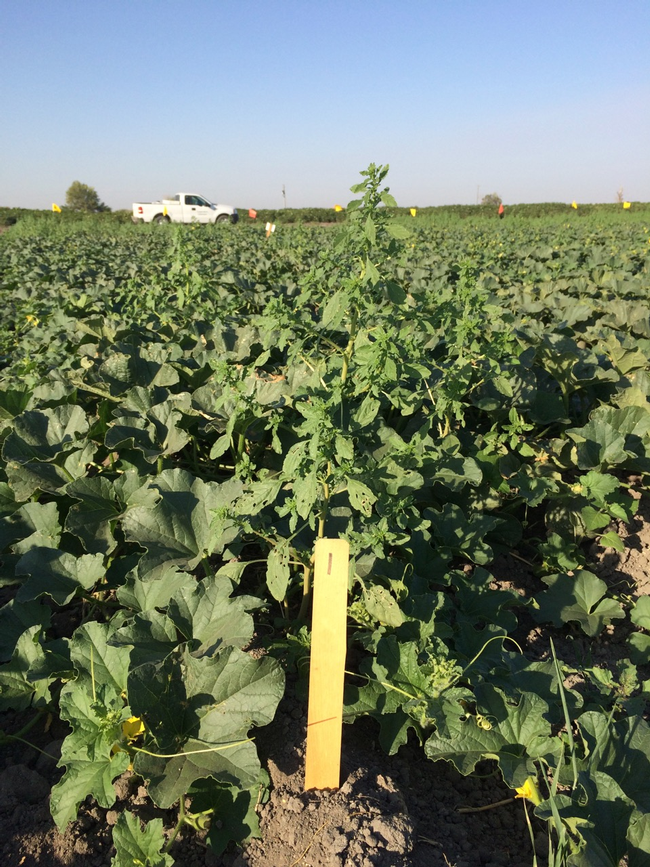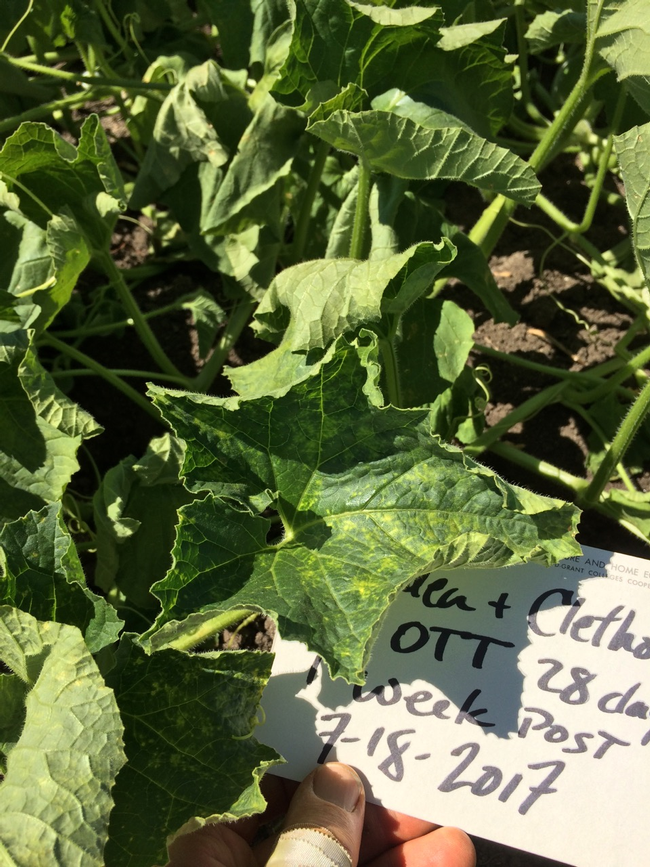There are a limited number of herbicides registered for melon production in California and Arizona, two of the major production areas for cantaloupes and honeydews. Shallow cultivation and nonselective herbicides with no soil activity can be effective if used after bed formation and before planting. Both contact (paraquat [Gramoxone]) and systemic (glyphosate [Roundup]) herbicides can be used. Curbit (ethafluralin) can be effective, but should be used with caution, as crop injury will occur if it is concentrated around the germinating melon seed by water or cultivation.

Unfortunately, halosulfuron does not control grasses, and therefore tank mixtures with clethodim (Select Max) herbicides may improve overall weed control in melons. Grass weed control is improved with the addition of adjuvants, and crop oil concentrate at 1% v/v is recommended on the label. However, crop oil concentrates are not recommended with halosulfuron because they increase the chance for phytotoxicity on the crop. Melon Board sponsored research in 2016 showed that a tank mix with Sandea and clethodim was effective and safe on the crop when no adjuvants were used, and that the addition of surfactants could significantly increase crop phyto.
To evaluate this, two trials were performed in 2017 to evaluate both the timing and efficacy of POST emergence combinations of halosulfuron (Sandea) and clethodim (Select Max) herbicides on direct seeded melons in central California. Trial locations were in commercial honeydew and cantaloupe fields. Sandea was applied at 1 oz/A, and Clethodim 2E (26.4% ai) at 8 oz per acre. No adjuvants were used for any of the treatments. POST treatments were made at about 4 true leaves in the honeydew field, and 2 true leaves in the cantaloupes. Both applications were sprinkler incorporated within 24 hours. At 28 days after emergence, POST treatments were applied as a directed spray to the outside and shoulder of the beds to minimize contact with foliage, and as an over-the-top application across the top of the bed. The 28-day application was not sprinkler incorporated.

Results showed that Sandea applied at 2–4 leaves to be safe and effective when incorporated with sprinklers on both honeydew and cantaloupes, providing good weed suppression across a spectrum of broadleaf weeds. The addition of clethodim did not improve weed control, since there were few grassy weeds within the test area, but it did slightly increase crop injury with the over-the-top application at 28 days.
Scott Stoddard is a Farm Advisor for the UC Cooperative Extension Merced and Madera counties. csstoddard@ucanr.edu